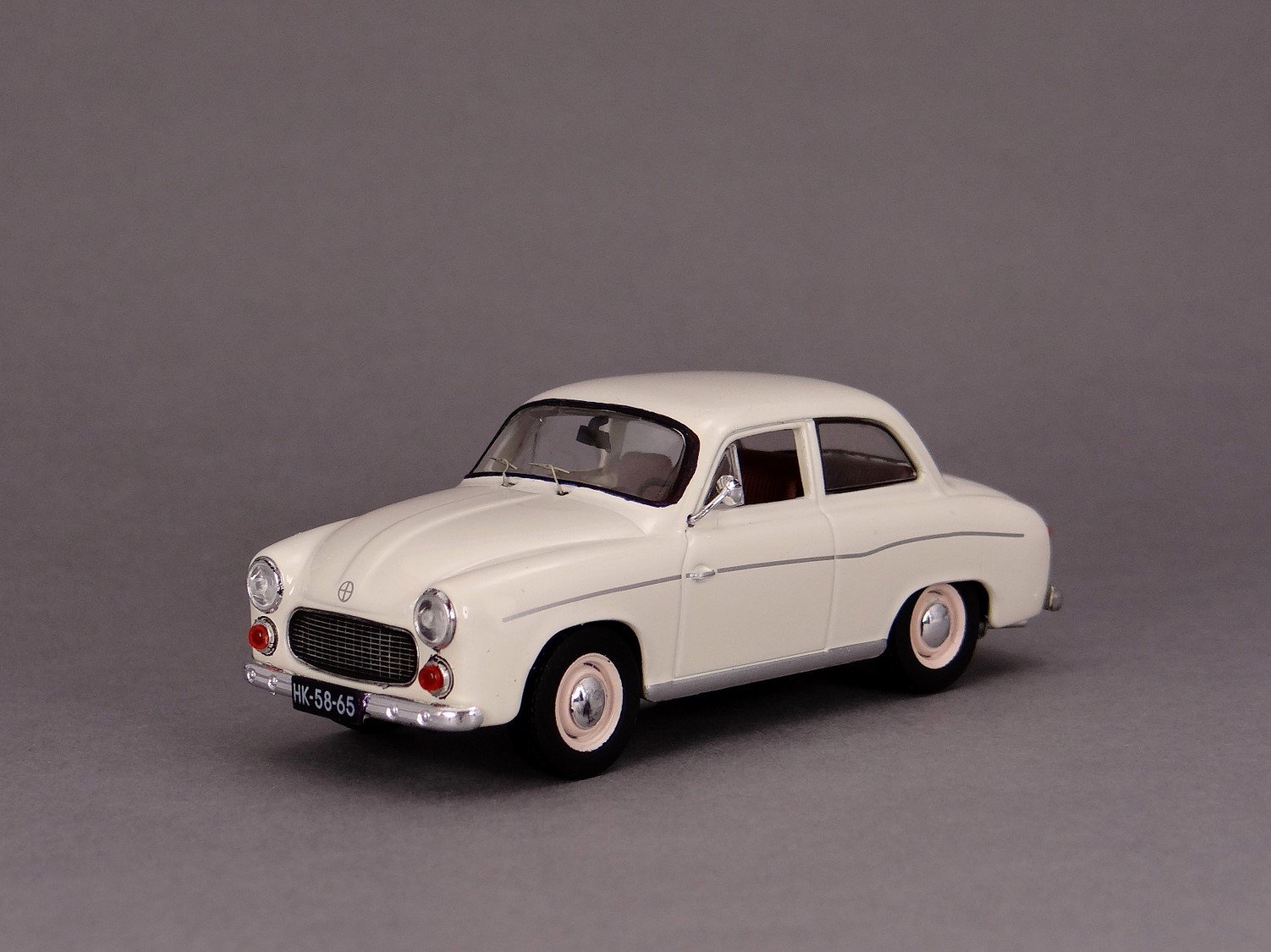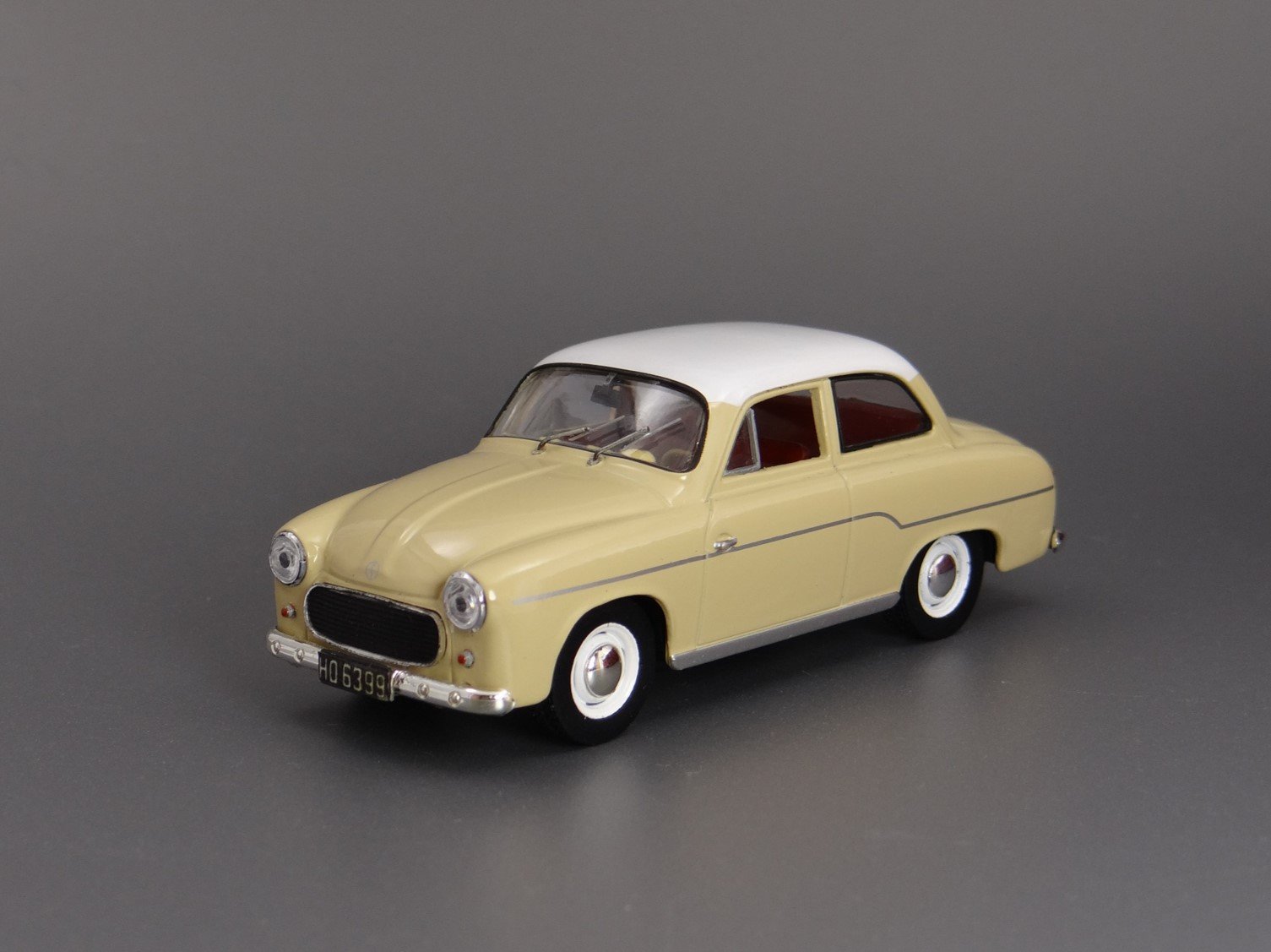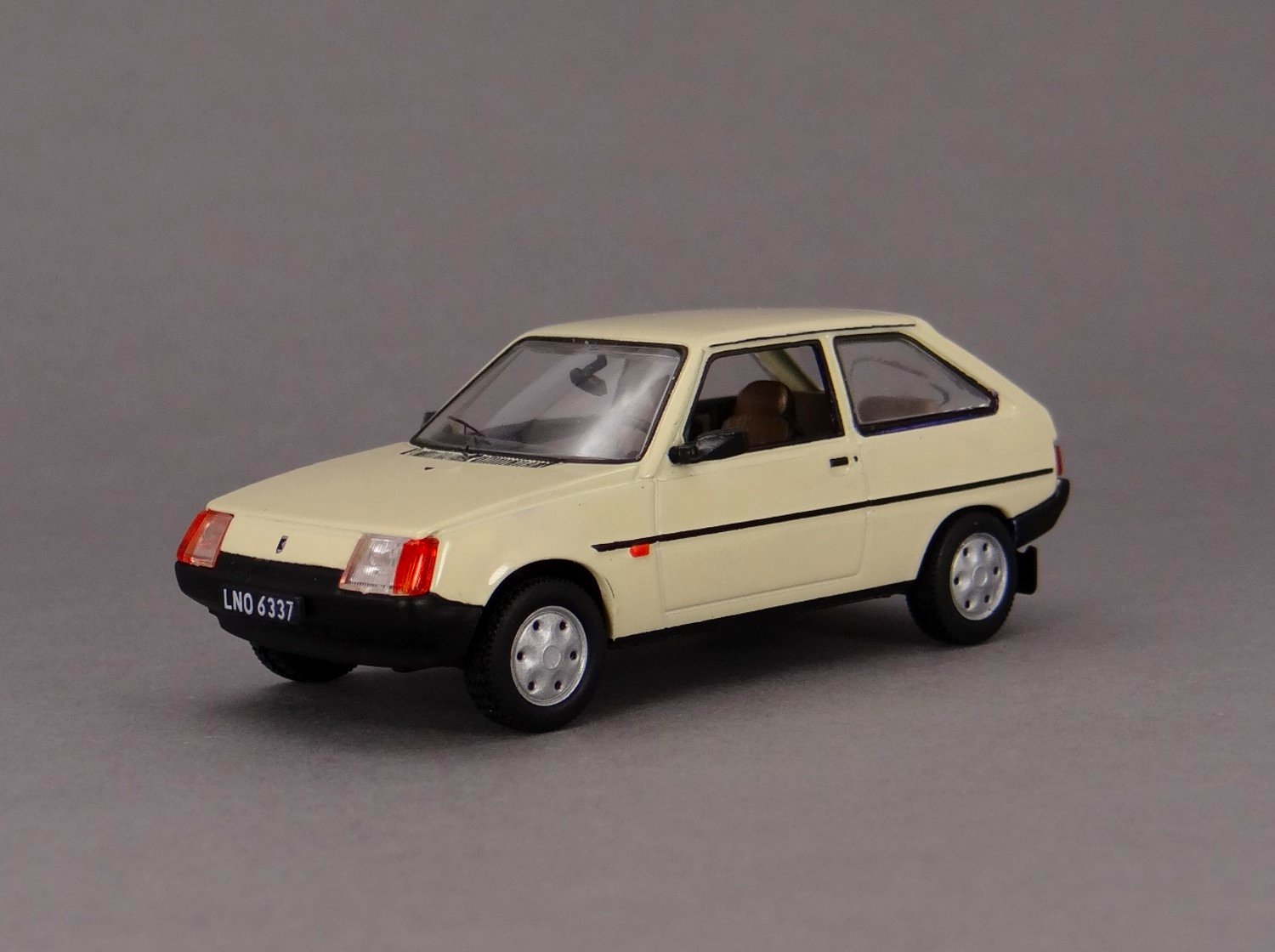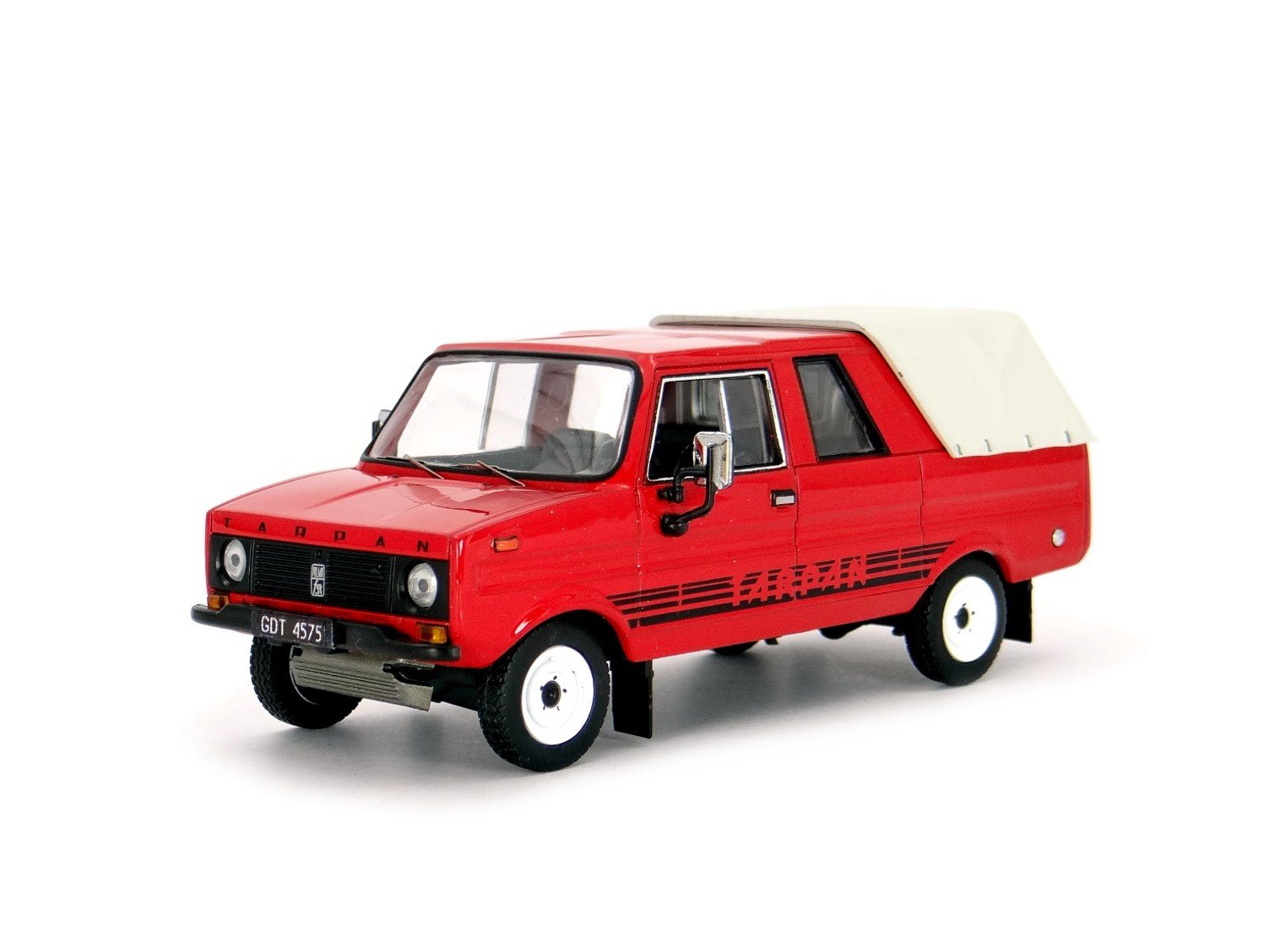O ile Nysę kojarzy większość Polaków, o tyle model N61 Tropic znają już tylko prawdziwi pasjonaci polskiej motoryzacji. Trudno się temu dziwić, bo Nysa w wersji Tropic przeznaczona była na rynki o gorącym klimacie i tylko niewielka liczba egzemplarzy zostawała w naszym kraju.
Model produkowano od 1961 roku a jego pełna nazwa brzmiała: Nysa San N61 M Tropic. Punktem wyjściowym do budowy tej odmiany stała się Nysa N61 M, model przejściowy między N-59 a 501. W odróżnieniu od zwykłych Nys, model Tropic wyposażano w daszek przeciwsłoneczny, dodatkowe wywietrzniki po bokach nadwozia oraz specjalnie izolowany dach. Było to niezbędne w krajach o dużym nasłonecznieniu. Wóz napędzał kultowy, dolnozaworowy silnik M-20. Jednostka ta była wytrzymała, jednak bardzo ślamazarna, szczególnie gdy na pokładzie znajdował się komplet pasażerów, a mieściło się ich nawet ośmiu. Z drugiej strony, czy komuś w tropikach zależy na pośpiechu?
Dzisiaj Nysa N61 Tropic to najprawdopodobniej gatunek wymarły. Według wielu źródeł ostatni raz tropikalną Nysę widziano w Warszawie w 2006 roku. Nie sposób określić czy zachowały się w Polsce jeszcze jakieś egzemplarze. Losy aut, które trafiły na eksport pozostają jeszcze większą tajemnicą.
O miniaturze
*********
While most Poles recognise the Nysa van, only the real enthusiasts of Polish automobiles know of the N61 Tropic model. This doesn’t come as much of a surprise, because Nysa in the Tropic guise was targeted at markets with a hot climate and only a small number of units stayed in Poland.
The model was produced from 1961 and its full name was: Nysa San N61 M Tropic. The basis for this new model was the Nysa N61 M, an interim model between the N-59 and 501. Unlike other Nysas, the Tropic was equipped in a sunshield, air vents on the side of the car and an isolated roof. These modifications were necessary in countries with high insolation. The car was powered by a cult, flathead M-20 engine. The unit was durable, but incredibly sluggish, especially when full set of passengers was on board, and Nysa could sit up to eight of them. On the other hand, does anyone need hurry in the tropics?
Today Nysa N61 Tropic is most likely to be an extinct species. According to many sources the tropical Nysa was seen for the last time in Warsaw in 2006. It’s impossible to say whether there are other survivors left in Poland. The fate of cars which were exported remains an even bigger mystery.
The model, just like the majority of miniatures of Polish cars, was produced by IST Models for the purposes of Kultowe Auta PRL-u series. The car was released in the 126th issue of the collection and it is one of the most solid points of this series. On an evenly painted, proportional body we have painted window trims, distinctive sunshields, additional side air vents and – possibly the most impressive detail – an engraved FSO logo on the wheel rims.
However, to prevent this festival of joy from lasting too long, the manufacturer ensured to include too large a wheels, an absence of the wing mirror and rear lights casted with the rest of the body. The last two items are particularly surprising, because on a Nysa N59 released earlier on, a wing mirror and rear lights made from separate elements were included. I guess they must have blew the budget already.
The Nysa which you can see on the photos was slightly modified. First, from kolekcjoner87 (I wrote more about who he is here), it received a coloured interior and a new number plate. Then, after getting to me, it obtained a chrome-finished grid of the front grill. I think that after these changes the model gained on looks. That’s my opinion. What’s yours? Tell me!
Model, tak jak większość
miniaturek polskich aut, został wyprodukowany przez IST Models na potrzeby
serii Kultowe Auta PRL-u. Autko ukazało się jako 126 numer tej kolekcji i jest
to jedna z najsolidniejszych pozycji wydawnictwa. Na równo pomalowanej,
proporcjonalnej bryle dostaliśmy pomalowane uszczelki szyb, charakterystyczne
daszki nad przednimi szybami, dodatkowe wloty powietrza na karoserii oraz
–chyba najbardziej imponujący detal – wytłoczony znaczek FSO na felgach. Można?
Można!
miniaturek polskich aut, został wyprodukowany przez IST Models na potrzeby
serii Kultowe Auta PRL-u. Autko ukazało się jako 126 numer tej kolekcji i jest
to jedna z najsolidniejszych pozycji wydawnictwa. Na równo pomalowanej,
proporcjonalnej bryle dostaliśmy pomalowane uszczelki szyb, charakterystyczne
daszki nad przednimi szybami, dodatkowe wloty powietrza na karoserii oraz
–chyba najbardziej imponujący detal – wytłoczony znaczek FSO na felgach. Można?
Można!
Żeby jednak festiwal
radości nie trwał zbyt długo, postarano się o zbyt duże koła, brak lusterka
bocznego i tylne światła odlane wraz z nadwoziem. Szczególnie dziwią dwa
ostatnie elementy, bo w wydanej wcześniej Nysie N59 były i lusterko boczne i
szkiełka świateł. Cóż, najwyraźniej budżet się nie dopiął.
radości nie trwał zbyt długo, postarano się o zbyt duże koła, brak lusterka
bocznego i tylne światła odlane wraz z nadwoziem. Szczególnie dziwią dwa
ostatnie elementy, bo w wydanej wcześniej Nysie N59 były i lusterko boczne i
szkiełka świateł. Cóż, najwyraźniej budżet się nie dopiął.
Nysa, którą widzicie na zdjęciach
przeszła pewne modyfikacje. Najpierw, od kolekcjonera87, dostała malowane
wnętrze i nową rejestrację. Potem, gdy trafiła do mnie, otrzymała chromowane
ożebrowanie wlotu powietrza. Wydaje mi się, że po zmianach zyskała na urodzie. Takie
jest moje zdanie. A Wasze? Zapraszam do oceny!
przeszła pewne modyfikacje. Najpierw, od kolekcjonera87, dostała malowane
wnętrze i nową rejestrację. Potem, gdy trafiła do mnie, otrzymała chromowane
ożebrowanie wlotu powietrza. Wydaje mi się, że po zmianach zyskała na urodzie. Takie
jest moje zdanie. A Wasze? Zapraszam do oceny!
*********
While most Poles recognise the Nysa van, only the real enthusiasts of Polish automobiles know of the N61 Tropic model. This doesn’t come as much of a surprise, because Nysa in the Tropic guise was targeted at markets with a hot climate and only a small number of units stayed in Poland.
The model was produced from 1961 and its full name was: Nysa San N61 M Tropic. The basis for this new model was the Nysa N61 M, an interim model between the N-59 and 501. Unlike other Nysas, the Tropic was equipped in a sunshield, air vents on the side of the car and an isolated roof. These modifications were necessary in countries with high insolation. The car was powered by a cult, flathead M-20 engine. The unit was durable, but incredibly sluggish, especially when full set of passengers was on board, and Nysa could sit up to eight of them. On the other hand, does anyone need hurry in the tropics?
Today Nysa N61 Tropic is most likely to be an extinct species. According to many sources the tropical Nysa was seen for the last time in Warsaw in 2006. It’s impossible to say whether there are other survivors left in Poland. The fate of cars which were exported remains an even bigger mystery.
About the miniature
The model, just like the majority of miniatures of Polish cars, was produced by IST Models for the purposes of Kultowe Auta PRL-u series. The car was released in the 126th issue of the collection and it is one of the most solid points of this series. On an evenly painted, proportional body we have painted window trims, distinctive sunshields, additional side air vents and – possibly the most impressive detail – an engraved FSO logo on the wheel rims.
However, to prevent this festival of joy from lasting too long, the manufacturer ensured to include too large a wheels, an absence of the wing mirror and rear lights casted with the rest of the body. The last two items are particularly surprising, because on a Nysa N59 released earlier on, a wing mirror and rear lights made from separate elements were included. I guess they must have blew the budget already.
The Nysa which you can see on the photos was slightly modified. First, from kolekcjoner87 (I wrote more about who he is here), it received a coloured interior and a new number plate. Then, after getting to me, it obtained a chrome-finished grid of the front grill. I think that after these changes the model gained on looks. That’s my opinion. What’s yours? Tell me!













Witaj Piotrze,
podobnie jak Ty uważam, że model ogromnie dużo zyskał dzięki poprawkom Michała oraz Twoim. Mój egzemplarz nie był tak czysto złożony 🙂
Pozdrawiam;)
Witaj!
Dzięki za komentarz. Montaż w KAP-ach jest, jak wiemy, czysto loteryjny niestety. Zdarzają się modele bez zarzutu, średnie oraz fatalne. Nie raz musiałem kupować dwa, by złożyć jeden „bez skaz”.